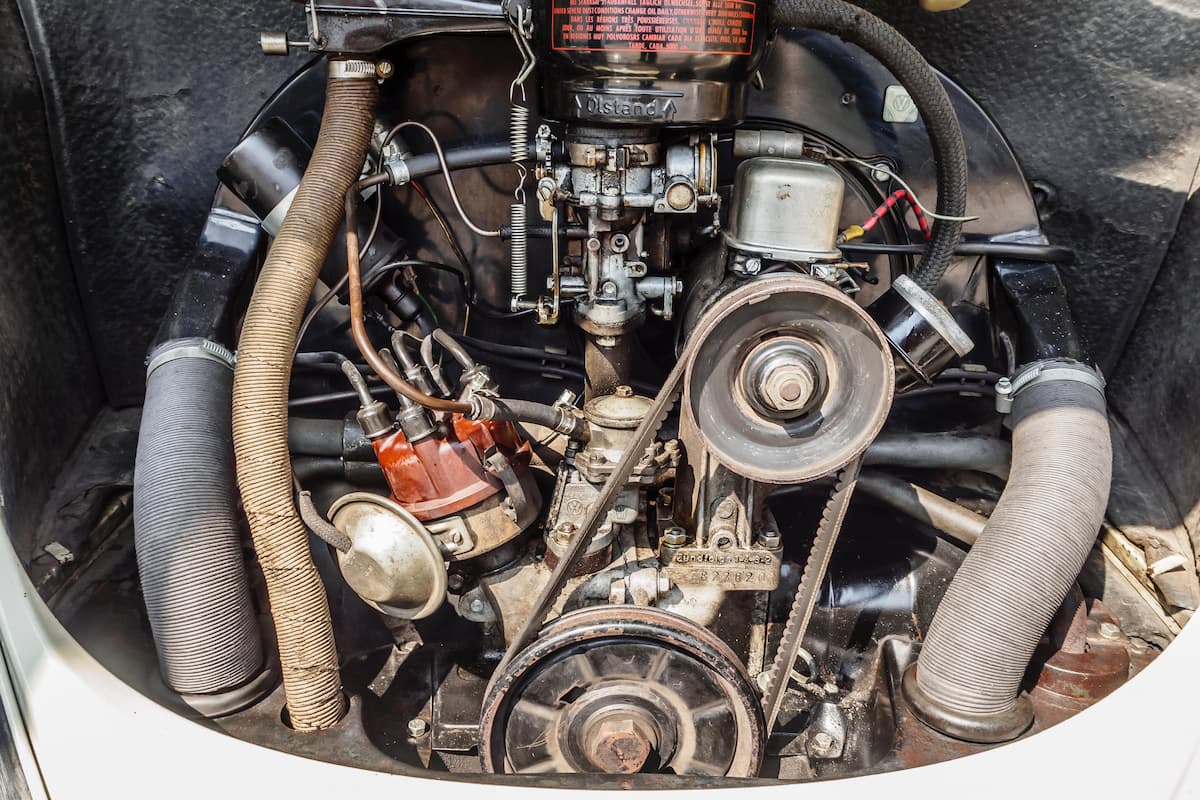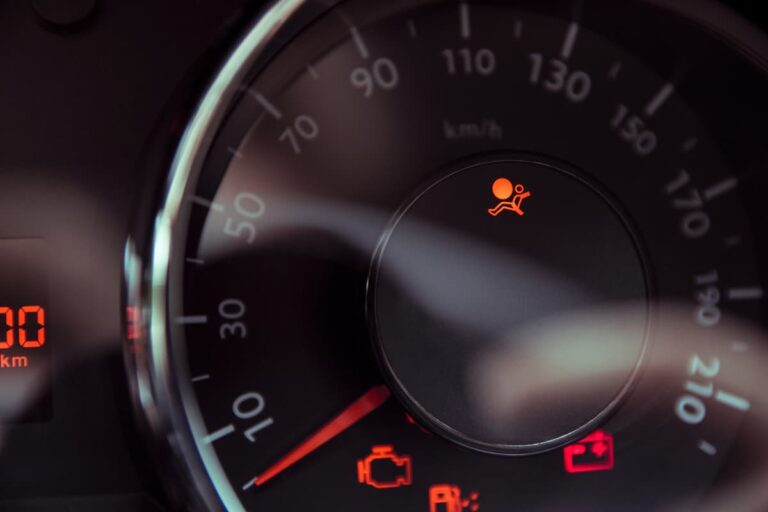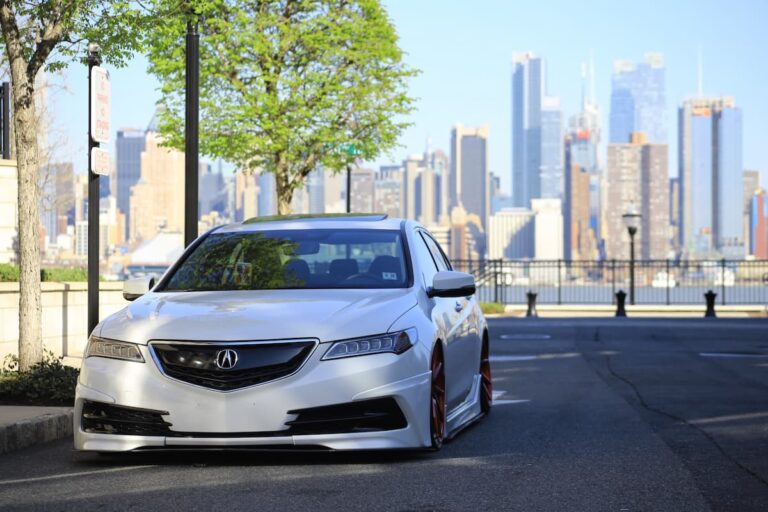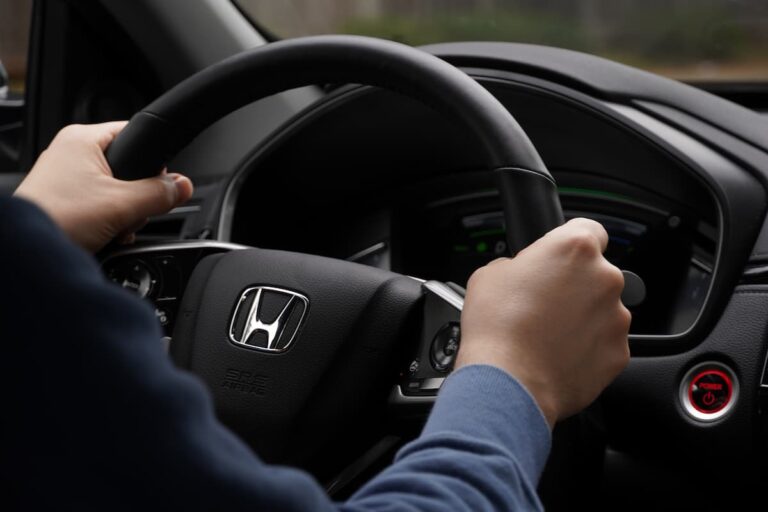What Happens When A Honda Timing Belt Breaks?
A timing belt is a toothed rubber belt that links the camshaft or camshafts to the engine crankshaft.
The timing belt keeps the camshaft and crankshaft synchronized so cylinder valves can open (and close) at the right time relative to the pistons’ position.
Cylinder valves allow the engine to draw in air (or air mixed with fuel) and expel exhaust.
If the timing belt breaks, your Honda engine cannot operate. The camshafts won’t turn, leaving the cylinder valves open. The crankshaft will keep rotating, inducing motion in the piston, potentially causing it to collide with open valves.
Cars with interference engines (like Hondas) have pistons that occupy the same space as the open valves. The result is an engine with damaged valves, pistons, or cylinder heads/blocks.
In non-interference engines, however, pistons and valves don’t occupy the same space. When the timing belt breaks, the engine fails, but there’s usually no additional damage.
What Happens When My Timing Belt Breaks While Driving?

When your timing belt breaks while driving, your engine stops working. Because most Hondas have interference engines, you may also have:
- A damaged piston
- Bent or broken valves
- A damaged cylinder wall or head
- A damaged camshaft.
While the car is running, engine parts are in motion. If your timing belt breaks, the synchronization of these parts is interrupted, and some parts continue to move while others cease to operate.
Moving pistons collide with the now stationary cylinder values, causing extensive damage. However, if the belt breaks when the vehicle is not running, you will avoid this issue.
Engine damage from a broken timing belt can cost thousands of dollars to repair, which leads many to ask why Hondas don’t have non-interference engines.
Most modern vehicles have interference engines because they achieve higher compression ratios.
When the air/fuel mixture in your combustion chamber is compressed more, it increases power and efficiency. Your engine also breathes better because the valves open earlier, wider, and stay open longer.
The downside of high compression is that it pushes your piston up the cylinder, coming close to the valves and increasing the chances of a collision if your timing belt breaks.
Signs of a Bad Timing Belt
Unfortunately, timing belts typically fail at random (in most cases). You’ll often get no warning signs that your timing belt is damaged or failing.
However, if the damage is gradual, you can look for a few specific signs that could indicate your timing belt is bad.
1. Ticking Sound
Ticking noises, in some instances, are due to low engine oil pressure. Insufficient oil pressure can cause your belt to loosen and eventually break.
If you’re sure your oil is at a reasonable level, the pulleys controlling the belt may be worn, and you’ll need a mechanic to check them out.
2. Too Much Smoke
An exhaust that expels excess smoke can stem from a worn timing belt.
If the belt isn’t functioning as it should, it puts extra stress on the engine. The engine works harder than usual, but because it can’t burn fuel properly, it emits excessive smoke.
The solution might be a timing adjustment by a mechanic since the valves aren’t in sync.
3. Increased Vibrations
Valves that don’t open or close at the right time might cause increased vibrations in the engine.
Poor valve timing can also stem from bad spark plugs, so test (and replace) your plugs first. However, if new spark plugs don’t solve the problem, the next part to replace is likely your timing belt.
4. Oil Leaks Near the Engine
An oil leak can stem from several problems, including a worn gasket, damaged seals, and a missing oil pan drain plug, all of which can lead to engine overheating.
The more the engine overheats, the more the timing belt wears. While you should prioritize the leak and cooling down your engine, you’ll also want to make sure your belt doesn’t break.
In some cases, the oil leak is directly tied to a worn timing belt that needs replacing.
5. Engine Misfires
If your timing belt is too worn, your Honda won’t start properly.
The belt synchronizes the camshaft to the crankshaft position. If a tooth is damaged, the belt can skip a tooth on the cam or crankshaft sprocket, causing the cylinders to operate incorrectly.
Engine parts that operate out of sync risk damaging other components, including the valves and pushrods.
If your engine is misfiring, it’s highly recommended to take your Honda to a professional who can properly diagnose the issue.
6. Car Won’t Start
If your Honda won’t start, your timing belt is likely broken, and you need a new one.
The cause could also be a dead battery, a bad alternator, or issues with the ignition switch. But if these parts are in good condition, you’ll need to have your Honda towed to a mechanic so they can address the problem.
What Should I Do if My Honda Timing Belt Breaks?

If the timing belt breaks in your Honda, you’ll have to call a mechanic. If the belt breaks while driving, have the vehicle towed.
The solution is usually a timing belt replacement. The part is inexpensive, but labor can be pricey.
Replacing a timing belt requires disassembling the engine, which can take at least 8 hours, depending on the mechanic’s skill level, familiarity with the model, and the vehicle’s age.
The mechanic also needs to set the timing and put the engine back.
Because Hondas have interference engines, other parts might also need replacing, adding to the cost and repair time.
You can save costs by purchasing a timing belt kit containing all the integral parts rather than buying every component individually.
Buying each part separately is not only more expensive, but you must also replace components like the tensioner and pulleys simultaneously to avoid breakdowns.
Timing belt kits are usually sold according to the vehicle model and engine size, and buying your own kit is often better than relying on the mechanic.
That said, some shops don’t allow outside parts, so you’ll have to confirm before proceeding.
Also, make sure the mechanic is experienced and qualified. Sometimes, inexperienced mechanics can’t determine if other parts are affected and will err on the side of caution and replace everything.
While it might be a sure way to mitigate future problems, you might end up paying for repairs you didn’t need.
Ways to Help Prevent Timing Belt Damage
The best way to prevent timing belt failure is to take your vehicle for regular inspections every 15,000 miles (24,000 km).
The service is relatively inexpensive, rarely costing more than $50.
You won’t need to replace timing belts as regularly as getting them inspected. Honda recommends replacing your belt every 100,000 miles (168,000 km) or 84 months, whichever comes first.
If you regularly drive in harsh temperatures, Honda recommends reducing that interval to every 60,000 miles (96,000 km) or 48 months.
It highlights the importance of working with a good mechanic familiar with your vehicle. Many drivers avoid dealership mechanics because they’re too expensive, but they’re not the only option.
With a little research, you can likely find someone reliable and experienced with Honda vehicles.
Conclusion
A broken timing belt is inconvenient and hard on your engine. The repairs are costly, and you’ll be without your vehicle for a while.
You can detect timing belt problems early by watching for:
- Ticking noises
- Too much smoke
- Increased vibrations
- Oil leaks
- Engine misfires.
The timing belt may be damaged beyond repair if your Honda doesn’t start at all.
It’s best to take the vehicle for regular inspections, and remember – you should replace your timing belt every 60,000-100,000 miles (96,000-168,000 km) or every 48 to 84 months, depending on your climate.
Do a little research and find a qualified mechanic. They’ll suggest the best solution, and you’ll avoid spending more than you need to.
Table of Contents






